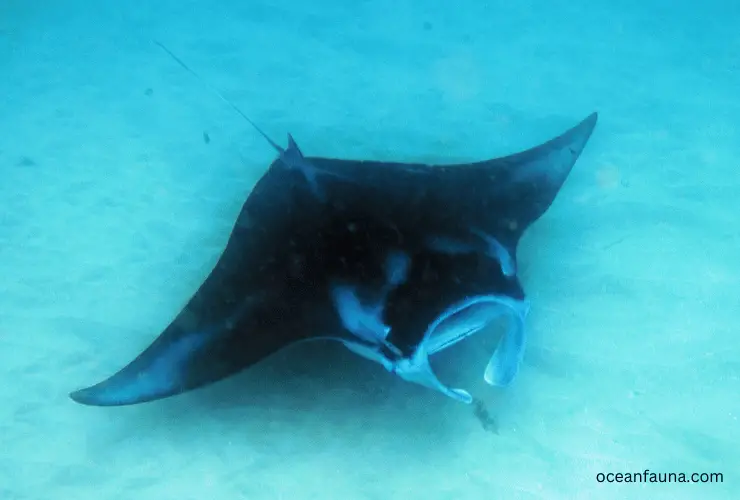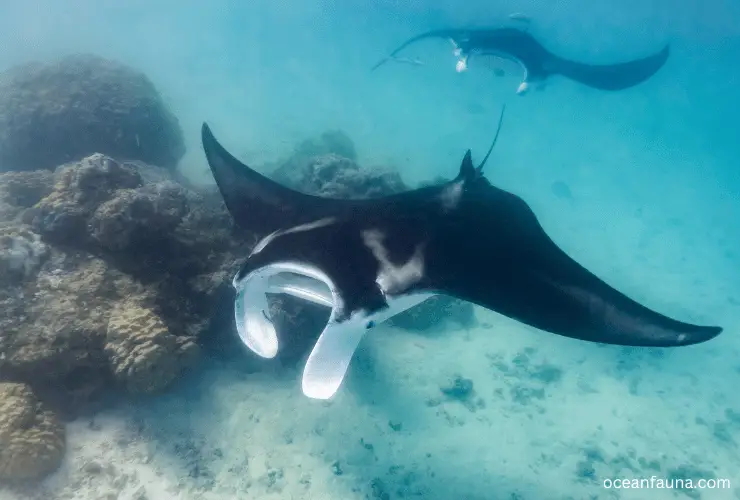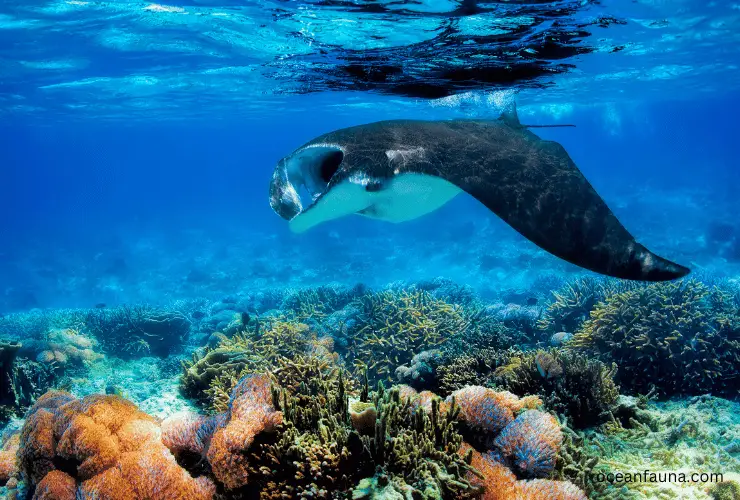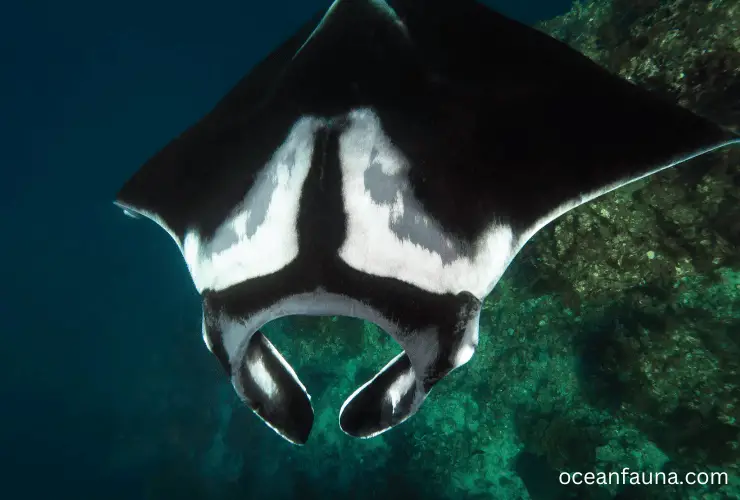Manta rays are sea animals that are known to swim pretty fast! These giant sea creatures swim at a speed of 9 miles per hour on average. However, when threatened, to get out of danger as quickly as possible, they can sprint as fast as 22 miles per hour!
These speeds are only achievable with specific features that only manta rays have. Such features include fin oscillations and undulations together! Very few of these unique creatures are left on this earth, so there are also fishing bans on manta rays.
Now we know how unusual and quick these sea creatures are. Let’s learn more about the speeds of manta rays and many other qualities that make them so different from other sea animals.
How Do Manta Rays Swim?
One of the things you may be most curious about is how manta rays swim. These sea creatures, just like their position in the list of sea creatures, have a unique way to swim.
These giant rays flap their pectoral fins up and down in a wave-like motion. This creates a phenomenon known as vortices in the water.
These vortices cause the surrounding water to push back, which helps the animal move forward.
The size and shape of the fins and the speed at which they are flapped are key features that determine the amount of thrust generated. The vortices also help to stabilize the rays as they swim.
Are Manta Rays Slow?
You might wonder how manta rays can swim slowly when we just discussed how fast they swim. As filter feeders, it turns out that manta rays also swim rather slowly.

They use their gill rakers to filter plankton and other small organisms out of the water. Mantas filter plankton out of the water through the use of detailed filters, trap systems, and gill rakers. When they eat, they tend to swim slowly with a lot of grace. Then they open their enormous mouths and start unrolling their horns to suck plankton into their oral cavity. This sort of act requires a lot of energy, so they don’t need to swim quickly to catch their food.
Also, mantas are very large animals, and moving their bodies through the water takes a lot of energy. Swimming slowly also helps them conserve energy.
What Adaptations Do Manta Rays Have?
Every animal has certain adaptations that they use to save themselves from different predators. Like that, manta rays have several adaptations that help them avoid predators.
First, manta rays possess a variety of sensory organs, such as electroreceptors, that can recognize the electrical fields of other animals and aid in detecting predators. This allows them to avoid predators even if they are not able to see them.
Additionally, they constantly swim to generate a water current that helps conceal their outline and their flat bodies help them blend in with the seafloor. This makes them difficult to see and gives them a better chance of escaping predators.
Why Can’t Manta Rays Stop Swimming?

This fact will blow your mind. Manta rays are the only animal that can never stop swimming! These sea animals have so many features that make them so unique, and this is one of them.
The truth is that manta rays are born to swim and must keep moving to stay alive. Just like the average fish, they have gills that take oxygen from the water. However, unlike fish, manta rays cannot stop swimming and let the water flow over their gills.
Hence, manta rays need to constantly move forward to create a water current that flows over their gills. This is why they are often seen swimming near the surface of the water, where there is more oxygen in the air. If a manta ray ever stops swimming, it will suffocate, die, and then eventually sink to the bottom of the ocean.
Kinematics of Swimming by the Manta Ray: Study Report
(Three-dimensional analysis of manta rays swimming)

Most aquatic animals use many different mechanisms to propel themselves forward. Manta rays are majestic creatures that combine oscillations and undulate their bodies to swim gracefully in the ocean. To understand the kinematics of the swimming of manta rays even more, a study was conducted. Here is all you need to understand about it!
This study explores the swimming patterns of the manta ray (genus Manta) in the open ocean. Understanding how manta rays move through their aquatic environment with such grace and efficiency was the main goal of this study.
It was done by analyzing their unique propulsion mechanisms, undulating motions, and gliding behavior through observational data. Manta rays, with their wing-like pectoral fins and diamond-shaped bodies, are very flexible swimmers despite their enormous size.
The research has inspired biomimetic engineering by uncovering the secrets of their remarkable swimming techniques, specifically in underwater robotics and propulsion systems. Understanding manta ray kinematics has provided valuable insights into marine ecology and inspired new advancements in underwater technology.
FAQs
Q: How Far Can Manta Rays Jump?
Manta rays also jump! They not only swim at a variety of speeds without ever stopping, but this is also one more fact that adds to their uniqueness. Like dolphins and other sea creatures, manta rays can jump up to three feet above the water! However, scientists need to find out why they are able to do so.
Q: Can Humans Swim with Manta Rays?
Manta rays are incredibly large creatures that humans may find intimidating at first. But on the safe side, these sea creatures do not have any stingers, teeth, or barbs, which means they cannot harm you. Scuba divers are advised to stay close to the bottom, and snorkelers are advised to remain on the surface in order to be completely safe and out of harm’s way.
Conclusion
In a nutshell, manta rays are sea animals with rare features that make them unique. When threatened or in danger, manta rays can swim at speeds of up to 25 miles per hour. Additionally, because manta rays are filter feeders, they must typically swim slowly to conserve energy.
Additionally, manta rays are destined never to stop swimming because if they do so, they will eventually suffocate and die. These animals are completely harmless and, like dolphins, can jump about 3 feet above the water!


1 thought on “How Fast Can Manta Rays Swim? [Why Can’t They Stop Swimming?]”